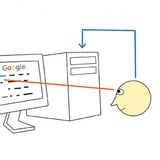"We propose augmentation-based source-free adaptation (ASFA), which consists of two parts: 1) source model training, where a novel data augmentation approach is proposed for MI EEG signals to improve the cross-subject generalization performance of the source model; and, 2) target model training, which simultaneously considers uncertainty reduction for domain adaptation and consistency regularization for robustness. ASFA only needs access to the source model parameters, instead of the raw EEG data, thus protecting the privacy of the source domain. ... This is the first work on completely source-free domain adaptation for EEG-based BCIs."
K. Xia, L. Deng, W. Duch and D. Wu. Privacy-Preserving Domain Adaptation for Motor Imagery-based Brain-Computer Interfaces. IEEE Transactions on Biomedical Engineering. 19 April 2022. https://doi.org/10.1109/TBME.2022.3168570
#methods #noninvasive_BCIs #BCI_classifiers #domain_adaptation
K. Xia, L. Deng, W. Duch and D. Wu. Privacy-Preserving Domain Adaptation for Motor Imagery-based Brain-Computer Interfaces. IEEE Transactions on Biomedical Engineering. 19 April 2022. https://doi.org/10.1109/TBME.2022.3168570
#methods #noninvasive_BCIs #BCI_classifiers #domain_adaptation
"we proposed a framework that employs the open-set recognition technique as an auxiliary task to learn subject-specific style features from the source dataset while helping the shared feature extractor with mapping the features of the unseen target dataset as a new unseen domain. Our aim is to impose cross-instance style in-variance in the same domain and reduce the open space risk on the potential unseen subject in order to improve the generalization ability of the shared feature extractor."
Musellim S, Han DK, Jeong JH, Lee SW. Prototype-based Domain Generalization Framework for Subject-Independent Brain-Computer Interfaces. arXiv preprint arXiv:2204.07358. 2022 Apr 15. https://doi.org/10.48550/arXiv.2204.07358
#methods #noninvasive_BCIs #BCI_classifiers #domain_adaptation #BCI_papers
Musellim S, Han DK, Jeong JH, Lee SW. Prototype-based Domain Generalization Framework for Subject-Independent Brain-Computer Interfaces. arXiv preprint arXiv:2204.07358. 2022 Apr 15. https://doi.org/10.48550/arXiv.2204.07358
#methods #noninvasive_BCIs #BCI_classifiers #domain_adaptation #BCI_papers
"most self-paced approaches apply a window function on the continuous EEG signal and split it into long segments for further analysis. As a result, the system has a high latency. To reduce the system latency, we propose an algorithm based on the time series prediction concept and use the data of the previously received time samples to predict the upcoming time samples. Our predictor is an encoder-decoder (ED) network built with long short-term memory (LSTM) units. The onsets of the MI commands are detected shortly by comparing the incoming signal with the predicted signal. The proposed method is validated on dataset IVc from BCI competition III. The simulation results show that the proposed algorithm improves the average F1-score achieved by the winner of the competition by 26.7% for latencies shorter than one second."
Ayoobi N, Sadeghian EB. A self-paced BCI system with low latency for motor imagery onset detection based on time series prediction paradigm. arXiv preprint arXiv:2204.05450. 2022 Apr 12. https://arxiv.org/abs/2204.05450
#methods #noninvasive_BCIs #BCI_classifiers #self_paced_BCIs #BCI_papers
Ayoobi N, Sadeghian EB. A self-paced BCI system with low latency for motor imagery onset detection based on time series prediction paradigm. arXiv preprint arXiv:2204.05450. 2022 Apr 12. https://arxiv.org/abs/2204.05450
#methods #noninvasive_BCIs #BCI_classifiers #self_paced_BCIs #BCI_papers
